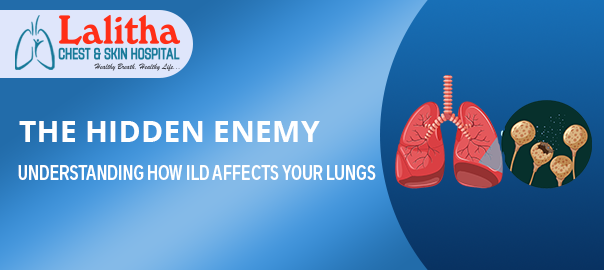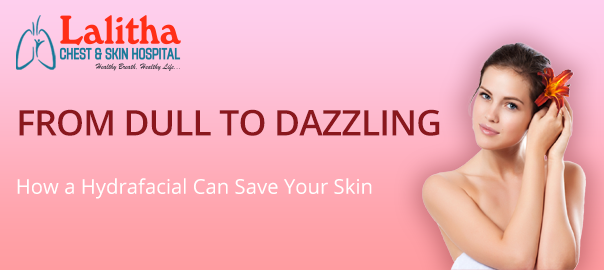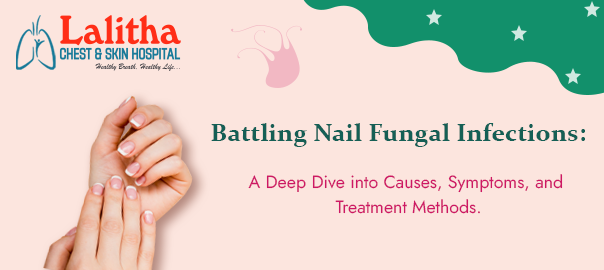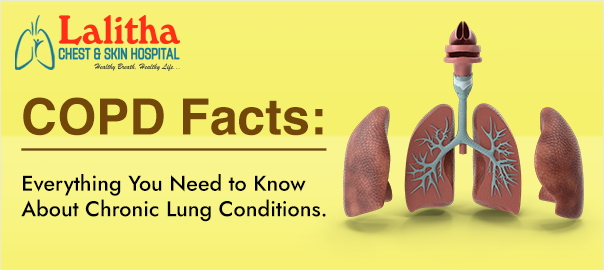Blistering skin diseases are a group of conditions that cause fluid-filled bumps to form on the skin. These blisters can range in size from tiny to large, and they can appear anywhere on the body.
“Blistering skin diseases can be a real pain. They cause discomfort, itching, and even scarring. While some blistering diseases are mild, others can be severe and necessitate medical attention,” explains Dr. B. Jyothi, a female skin specialist in Karimnagar. Because they are assumed to be regular acne majority of folks overlook them which leads to skin complications over time.
So it’s essential to recognize the symptoms early and seek professional care to manage the condition effectively and prevent complications.
We sought help from Dr. B. Jyothi at Lalitha Chest and Skin Hospital, the best skin care hospital in Karimnagar, to help us understand these skin conditions. With her input, we have compiled this blog with an aim to answer all crucial questions regarding this skin condition. Read on to know them:
What Causes Blistering Skin Diseases?
There are several different causes of blistering skin diseases, including:
- Autoimmune disorders: These conditions occur when the body’s immune system mistakenly attacks healthy tissues. In the case of blistering skin diseases, the immune system attacks proteins that hold the skin layers together, causing them to separate and form blisters. Examples include pemphigus and bullous pemphigoid.
- Genetic disorders: Some blistering diseases are caused by genetic mutations that affect the proteins in the skin. Epidermolysis bullosa (EB) is a group of inherited blistering diseases.
- Infections: Bacterial and viral infections can sometimes cause blistering skin diseases. One example is staphylococcal scalded skin syndrome.
- Medications: Certain medications can cause blistering skin reactions as a side effect.
What are the Symptoms of Blistering Skin Diseases?
The symptoms of blistering skin diseases can vary depending on the specific condition. However, some common symptoms include:
- Blisters on the skin, which may be filled with clear fluid, blood, or pus.
- Pain or burning around the blisters.
- Itching.
- Redness around the blisters.
- Erosion of the skin (when the top layer of skin breaks open).
Symptoms can worsen over time if left untreated. It’s essential to consult a healthcare professional for proper diagnosis and treatment if you suspect you have blistering skin diseases.
How are Blistering Skin Diseases Diagnosed?
If you are experiencing symptoms of blistering skin disease, it is important to see a doctor for diagnosis. A qualified skin doctor will likely ask you about your medical history and perform a physical examination. They may also order one or more of the following tests:
- Skin biopsy: A small sample of skin is removed and examined under a microscope.
- Blood tests:These can help to identify autoimmune disorders or infections.
- Immunofluorescence testing:This test can help to identify the specific proteins that are being attacked by the immune system.
Treatment for Blistering Skin Diseases:
The treatment for blistering skin diseases will depend on the underlying cause. There is no one-size-fits-all treatment, but some common approaches include:
- Medications: These may include corticosteroids to reduce inflammation, antibiotics to treat infections, or medications to suppress the immune system.
- Wound care:This is important to prevent infection and promote healing.
- Surgery: In some cases, surgery may be necessary to remove damaged skin or to correct scarring.
Living with a Blistering Skin Disease:
If you have been diagnosed with a blistering skin disease, there are steps you can take to manage your condition and improve your quality of life. These may include:
- Following your doctor’s treatment plan: This is essential for controlling your symptoms and preventing complications.
- Protecting your skin:Avoid activities that could irritate your skin or cause blisters.
- Managing stress: Stress can worsen some blistering skin diseases.
- Joining a support group: Connecting with others who have similar conditions can be helpful.
Blistering skin diseases can be a challenge, but with proper diagnosis and treatment, most people can manage their condition and live full, active lives.
For an accurate diagnosis and proper treatment, it is important to consult a skin care professional, as untreated infections can worsen. Adherence to the treatment regimen and patience are essential for complete eradication and prevention of recurrence.
For comprehensive information on blistering skin diseases and treatment methods, scheduling a consultation with a dermatologist who specializes in these diseases is highly recommended.
If you’re experiencing blistering skin diseases and are still looking up with terms like “blistering skin disease treatment,” “autoimmune disorder skin blisters,” or “lip fever blister treatment” on Google, we can offer the information and support you need.
Dr. B. Jyothi, Karimnagar’s leading dermatologist in Karimnagar, specializes in advanced treatments for blistering skin diseases at Lalitha Chest and Skin Hospital. For more information, visit https://lalithachestandskinhospital.com/











